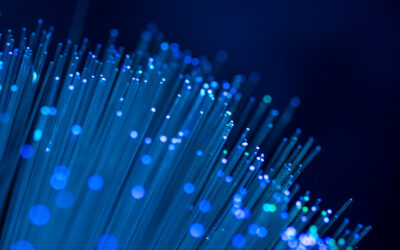Feature Article
Leveraging 5G to Help Bridge the Digital Divide
There’s an undeniable digital divide in the United States, and there has been for over two decades now. According to Pew Research, the term ‘digital divide’ was created more than 22 years ago to describe the negative effects of not being connected. Put simply, the digital divide is “the gap between individuals, households, businesses and geographic areas at different socio-economic levels with regard to both their opportunities to access information and communication technologies (ICTs) and to their use of the Internet for a wide variety of activities” (OECD).
As the coronavirus pandemic shut down most of the world, kids and adults alike were forced to move from schools and businesses to home which created a high demand for a strong and reliable home internet connection. For school-aged children, this shift to doing school from home highlighted what’s known as the “homework gap”—a disparity between those who have access to high-speed internet at home and those who don’t. Many households were not equipped with a broadband connection to handle a dramatic boom in simultaneous wireless activities—doctor appointments, social groups, online school, work meetings, and more.
While adopting the technologies of our growing digital economy seems unavoidable, it’s important to consider those who have limited access to digital technologies and wireless connectivity, and the solutions available to increase connectivity. The Federal Communications Commission reports 4 million homes are without broadband today (CTIA). Pew Research reports “about four-in-ten adults with lower incomes do not have home broadband services (43%) or a desktop or laptop computer (41%).” They continue, “Roughly one-third of households with children ages 6 to 17 and whose annual income falls below $30,000 a year do not have a high-speed internet connection at home, compared with just 6% of such households earning $75,000 or more a year” (Pew Research, 2018). Rural communities are also less likely to be connected than urban areas.
Leveraging the power of 5g
Proposed solutions to bridging the digital divide are being discussed among industry experts and government policymakers. For example, with help from the FCC, the Emergency Broadband Benefit provided discounts for broadband services for eligible households.
5G has proven to be a robust infrastructure that has and is continuing to reach unconnected households. Fixed-wireless 5G service and 5G home services are being installed in underserved communities across the country.
Expanding and updating the wireless infrastructure across America will increase productivity, revenue, a general sense of community engagement, school work, national security, and more. With increased speeds, lower latency, and lower implementation costs for infrastructure, 5G offers hope to a growing demand for faster connection and a wider reach that will help bridge the digital gap…maybe once and for all.
5G offers speeds that will satisfy the needs of American households well into the future and can be deployed more quickly and cheaply. We believe that 5G should be on the menu of options available to communities and operators to meet the needs of unserved Americans.
Executive VP
CTIA
Recommended Resources
The Economic Impact of 5G
The Economic Impact of 5G5G is much more than a high-quality, low-latency network connection. 5G has and will continue to have a significant impact on the economy. From increased jobs, to technology development, and improved safety, 5G will drive growth across...
4 Ways That 5G Is Changing The Way American’s Work
Secure & reliable communications systems and infrastructure are a critical part of national security, public safety, and economic growth.

